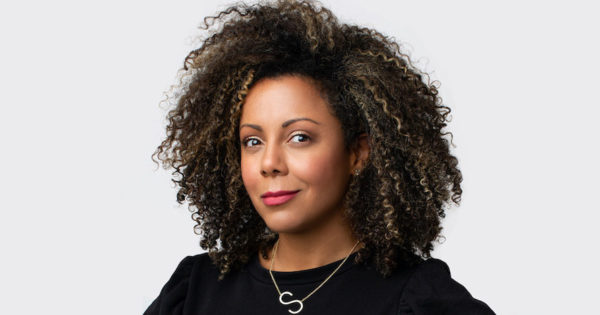Kraft Heinz CEO's real test starts now
Miguel Patricio needs to raise prices without losing all those consumers who rediscovered Kraft macaroni & cheese during COVID lockdowns.

After three years atop Kraft Heinz, CEO Miguel Patricio has shored up the ketchup maker’s battered flagship brands and surfed the COVID-driven wave of demand for grocery staples.
He’ll have to make his own wave now that people are eating outside the home again and bring along customers who rediscovered macaroni & cheese during the pandemic.
The loyalty of such consumers is not a given, especially as Kraft Heinz raises prices to cover costs driven higher by inflation. Customers tend to decamp for cheaper brands as prices rise, and they’ve already begun to drift away from Kraft Heinz. Sales volumes dropped 2% in the first quarter as the Chicago-based maker of such grocery staples as Oscar Mayer meats, Velveeta cheese spread and Heinz ketchup raised prices 9%.
Analysts say the decline would have been worse without Patricio's spending to reinvigorate brands that his predecessor starved of capital, and divestitures that reduced the company's exposure to cheaper store brands. But worse could be yet to come, as rising costs test Patricio’s ability to boost prices without losing customers.
“Kraft Heinz’s ability to retain those households that may have started purchasing its products during the height of the pandemic still isn’t a guarantee,” says Erin Lash, an analyst at Morningstar. “They need to continue to invest ... to make sure they’re keeping pace with consumer trends, which historically has been a shortcoming of leading brands.”
Investors seem unsure what to expect. Kraft Heinz stock has bounced around during Patricio’s tenure, rising 30% in his first two years before giving back more than half the gains in the next five months. Recently, though, the price has moved to a level about 22% higher than when he took over.
To keep the stock aloft and protect profit margins while raising prices, Patricio will need every bit of marketing savvy he was known for when he joined Kraft Heinz from AB InBev, where he was credited for greenlighting Budweiser’s successful "Dilly Dilly" ads.
Patricio took over a company in crisis on July 1, 2019. Sales were falling in the wake of deep cuts by predecessor Bernardo Hees, who was installed as CEO by 3G Capital after the Brazilian buyout firm teamed up with Warren Buffett to merge Kraft Foods and Heinz in 2015. Carrying out the 3G playbook, Hees eliminated thousands of jobs and shuttered factories in a cost-cutting campaign that slashed $2 billion in expenses and briefly inflated the company’s profit margins to industry-leading levels.
The lack of investment quickly deflated Kraft Heinz’s brands, leading to write-downs totaling more than $15 billion. With revenues down and profit margins shrinking, Kraft Heinz stock fell 68% between early 2017 and July 2019, erasing $70 billion in market value.
Some wondered if Patricio was the right choice to reinvigorate the brands, since he came from another company controlled by 3G. There were also questions about 3G’s willingness to allow the kind of spending Kraft Heinz needed to reconnect with customers. But Patricio had a reputation for brand building, and he brought that ethos to Kraft Heinz.
Patricio's real test starts now
Under Patricio, who declined an interview request but responded to emailed questions, Kraft Heinz built an in-house advertising agency that won awards for its campaigns. One of his favorites: a Heinz-sponsored pause in video game platforms that lets players take a break without risking losing while they eat.
“We asked ourselves why we weren’t being as creative as we should be,” Patricio said. “We set out to redefine our creative ambition, across the entire company, not just in marketing.”
Along with attention-grabbing marketing campaigns, he moved to strengthen Kraft Heinz’s portfolio by selling off weaker brands, reducing exposure to commodity costs and avoiding competition with store brands. He used the proceeds of selling the natural cheese and nuts businesses in 2020 to pay down debt, fund growth investments and mitigate cost inflation.
Kraft Heinz caught a huge break that year when pandemic lockdown orders shuttered restaurants across the country, forcing consumers to stock up at grocery stores. Sales rose 4.8% to $26.2 billion in 2020 after sinking 4.9% in 2019. Last year, as lockdowns loosened, sales slipped slightly .5% to $26 billion. Net income nearly tripled to $1.01 billion in 2021.
Patricio’s real test starts now, as people get back into the groove of consistently eating outside the home. The shift, coupled with increased costs from inflation, means Kraft Heinz growth is once again under threat. Kraft Heinz reported that price hikes boosted organic sales 6.8% in the first quarter, but sales volumes were down 2.2%.
Patricio predicts some cooking-at-home habits will stick, but acknowledges that Kraft Heinz needs to keep consumers engaged. He pointed to recent investments in plant-based proteins; new products and flavors, like Heinz Dip & Crunch for burgers; and a new partnership with Google to better mine consumer data.
“These pandemic-era investments will make us more efficient and effective in delivering the foods people want,” he says. “While the pandemic caused plenty of disruption, it inspired us to evolve further and faster to build long-term opportunity for Kraft Heinz.”

 Koichiko
Koichiko 































